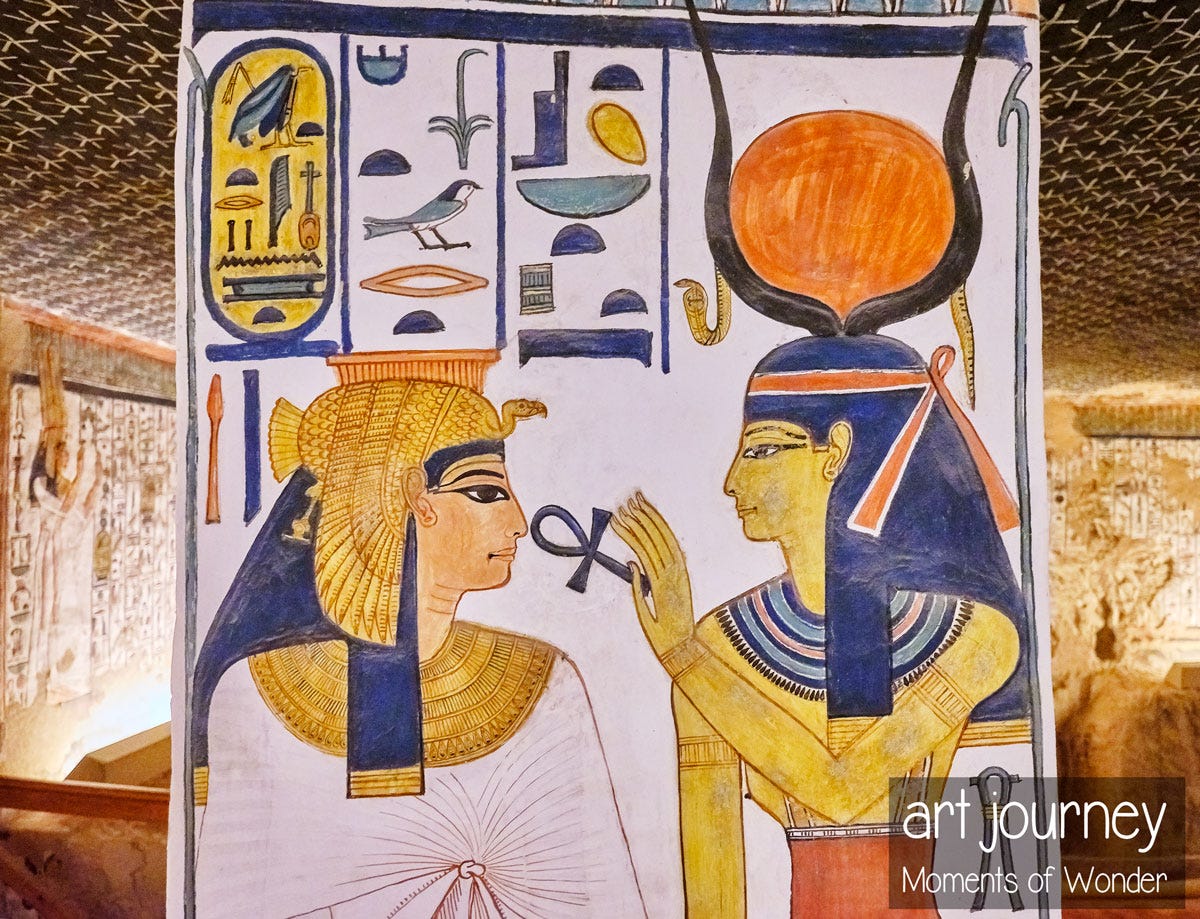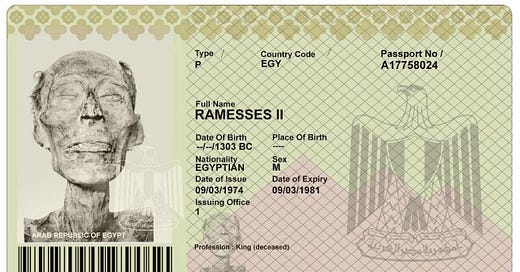Fascinating Stories Do Not Need To Be Based On Forgeries
Moments of Wonder Stories - Captivating But True
In an age when the internet is drowning in made-up stories, it becomes difficult to distinguish between reality and fiction.
An image, a meme, can appear on millions of screens within hours.
The situation will only become worse at a time when AI can make things up faster than a human brain can.
The point of Art Journey Moments of Wonder is to respect you, the reader, by sharing fascinating facts—stories based on actual research written in an accessible and awe-inducing way.
Ramses II’s passport
The first example is the famous passport photo issued for Ramses II's mummy when he came to Paris in 1976.
Ramses indeed flew to Paris, but it takes about two minutes of research to find out this image is complete nonsense.
A Pharaoh's mummy does not even need a passport—there never was one to begin with.
The source of the fake picture is written within the image: Heritage Daily, a magazine that wrote an article on Ramses' visit to Paris.
It did not hide that the illustration was fake, stating, "this is an artist's recreation and is not the original passport."
The copy-and-paste brigade missed that part.
Even a reputable magazine, National Geographic, repeats the story without having done a two-minute fact-check:
"Mummy mugshot - There's no known record of anything like a passport existing in ancient Egypt.
But in 1974, when the mummy of Ramses II (died 1213 B.C.) had to be flown to Paris for restoration, it was issued a valid Egyptian passport, including a photo of the pharaoh's ancient face.
His occupation was listed as “King (deceased).”
Ramses II’s love letter to Nefertari
The second example that is repeated all over the internet is that Ramses wrote a famous love letter about Queen Nefertari:
"My love is unique—no one can rival her, for she is the most beautiful woman alive.
Just by passing, she has stolen away my heart."
The problem is that this poem is fabricated, and retelling it while knowing it to be fake would mean thinking readers are too stupid to see the difference between fakery and reality.
Instead, a future article called "The True Story Of Ramses' Love For Nefertari" will explain the far more interesting reality.

That story respects and captivates you by sharing the inscriptions on the walls of Abu Simbel and Nefertari's tomb.
It's not a human trying to keep up with AI in speedily making things up; it is an art historian sharing knowledge with stories that transport you in times past as if you were in a time machine.
Lazyly repeating whatever someone says on social media takes one's readers for idiots.
Do you want a funny story about Pharaohs' mummies? Here is a real one:
See? It's possible to write a story that is both truthful and funny. Who said that an entertaining read needs to cost readers their brain cells?
One can respect readers' intelligence by giving them a lighthearted article worth their time for being true.
You get entertained while discovering a fascinating fact: fragments of Royal mummies have indeed been found inside pyramids.
If necessary, it proves that ancient aliens did not build pyramids, as there is plenty of evidence that pyramids were royal tombs—the subject of a future article.
Learning something valuable while having a moment of wonder is perfectly feasible.
Moments of Wonder - Fascinating Facts
Moments of Wonder are immersive stories that transport readers to the past.
They respect readers by researching before writing articles.
Enjoy regular moments of awe about art, civilization, and history by subscribing.
Sources
https://www.heritagedaily.com/2020/03/the-passport-of-ramesses-ii/126812
https://www.nationalgeographic.com/travel/article/weird-passports-history
https://factcheck.afp.com/image-was-digitally-created-representative-purposes
https://www.france24.com/en/live-news/20230406-1976-when-ramses-came-to-paris-for-a-mummy-makeover







